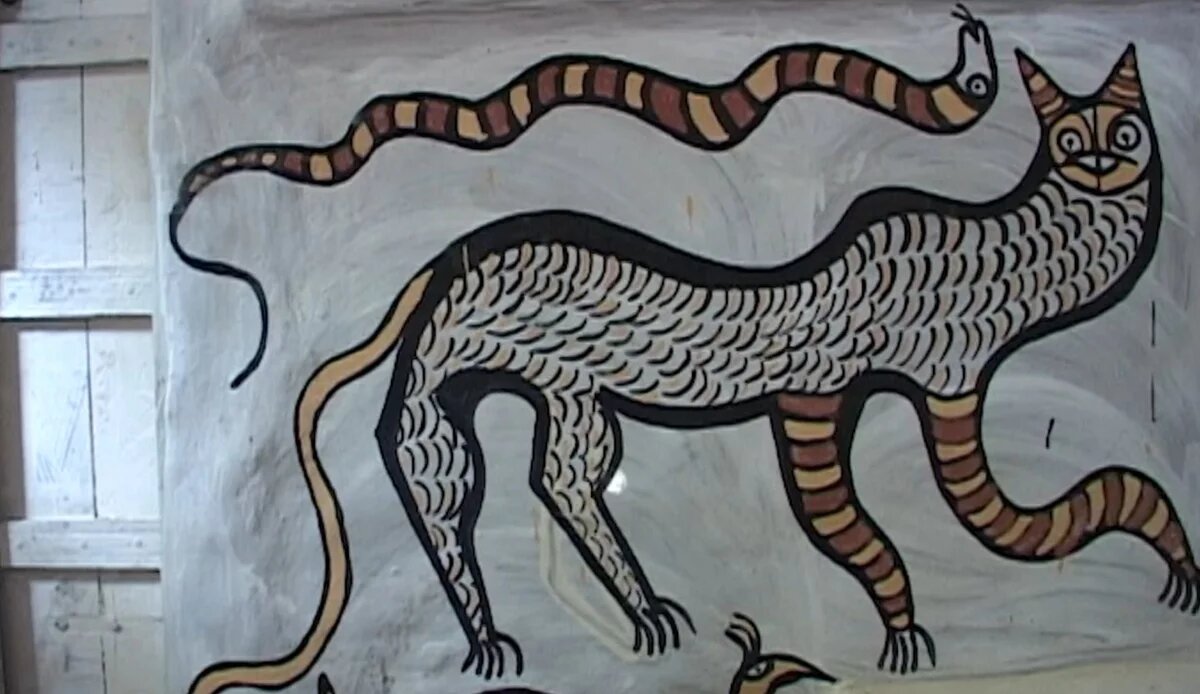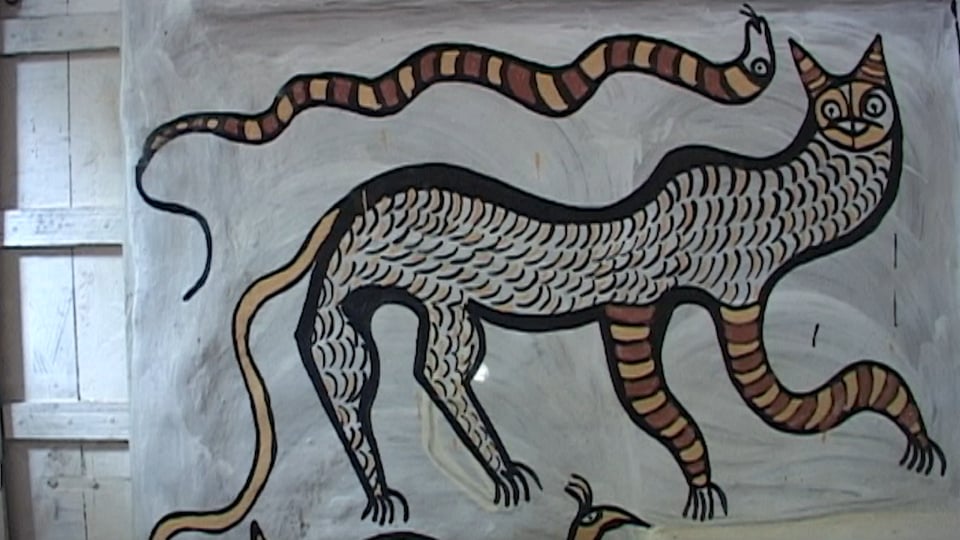Jharkhand, India: thousand year old rock- and wall paintings, green jungles and streets, blackened by coal dust, old lifestyles and their loss. „The one-eared elephant from Hazaribagh“ is a portrait of two outstanding artists on a journey into the world of their art and existence. Today they struggle to resist the destructive forces from open cast coal mining.

In 2001, I visited the Hazaribagh district in the newly formed Eastern state Jharkhand. What had inspired my journey was a pioneering study on rock art, which a friend had recommended to me, knowing that I was investigating minority issues and cultural activities of the Adivasi, the indigenous people of India. In this study, published by the Indian National Trust for Art and Cultural Heritage, the author Bulu Imam, an archeologist and environmentalist, documented so far unnoticed rock art sites in the North Karanpura Valley dating the Neolithic period. I was excited that he agreed to guide me shooting some visual material in some remote jungle villages in their direct neighbourhood, where a mural painting ritual art of Adivasi-women was still practised by probably its last remaining artists.
Facing the destruction of a spectacular treasure in the Damodar River Valley Bulu Imam began promoting Adivasi culture as a fundamental civil right in 1993 and initiated a loose collective of painters, the Tribal Women Artist's Cooperative of Hazaribagh (TWAC) in order to strengthen and revive a disappearing culture. Its approach is holistic, putting primary effort in keeping the tradition in its ritual context alive. Since the first successful international exhibition in the Australian Museum in Sydney 2000, the projects of the TWAC have empowered the women individually, politically and financially in a society, which looks still upon them.
The topic around rock art and village painting of women was challenging, complex, visually rich and still a blind spot on the map of Indian Art, what convinced us to cooperate in a long-term documentation. We considered this useful in several contexts: as an art film to be shown along with exhibitions of the women, on film festivals, as education and research material for institutions, universities and museums around the world and of course it could serve as an instrument of the women's public concern. We felt that a film, burdened with a lot of textual information, would narrow the angle and address only a small audience. While shooting the documentary, it was clear that it was not going to be an ethnographic film with commentaries of an outsider. Instead, the viewer would watch the performance of Adivasi women. She or he would meet Philomina Tirkey and Parvati Devi, two women painters at the place and Bulu Imam, the Cooperative founder, would follow, watch them, listen to them and observe them in their daily life and work.
The camera comes back again and again to the same wall, which is painted by the women for the harvest festival Sohrai, thereby unfolding the process of creation with its links to agriculture and nature, till today the major sources of reproduction of many Adivasi in Jharkhand. One of the film's last sequences depicts the artists Philomina and her daughter at the annual UN Conference of the Indigenous Working Group in Geneva, appealing to the international audience to protect the environment and pointing out, how Adivasi face their destruction.
We were fortunate to find supportive partners like the Heinrich Böll Foundation, so that the artists could visit Germany and produce visual images at the spot. They explained what they are doing and answered the beholder's questions. The exhibition at Berlin at the foundations main office in 2003 was contextualized with Indian and German experts, a film programme and documentaries on mining in the Karanpura Valley – a representation concept that found positive responses from the audience and could maybe inspire also Ethnographic Museums who have opened up to the idea of representing indigenous objects in their social-political context, the crisis, transformation and drastic changes which indigenous societies face today.
The one-eared elephant from Hazaribagh
Directed by Susanne Gupta in cooperation with the Tribal Women Artists Cooperative (TWAC)
Germany/India, 2004, 85 Min.
Jharkhand, India: thousand year old rock- and wall paintings, green jungles and streets, blackened by coal dust, old lifestyles and their loss. „The one-eared elephant from Hazaribagh“ is a portrait of two outstanding artists on a journey into the world of their art and existence. Philomina Tirkey and Parvati Devi, Adivasi (first dweller) woman live in Hazaribhagh, a fertile region in the Jharkhand State of Eastern India. It is the home of several indigenous tribal groups, whose subsistence lifestyle has changed little over the centuries. Both women mediate a very old tradition, which is still practiced in a few villages. Parvatis house attracts the eye: in an expressive manner, she paints figures such as plants with elaborate tendrils and finely formed leaves or animals like tigers, snakes and peacocks. Illiterate Adivasi women exclusively perform these wall paintings once in a year during Sohrai, the harvest festival. The women are part of a Cooperative, which has enhanced their self-esteem. Today the art is instrumental in adressing their existantial concerns to the international public. With Bulu Imam, an eccentric former wildlife hunter, they struggle to resist the destructive forces from open cast coal mining.
